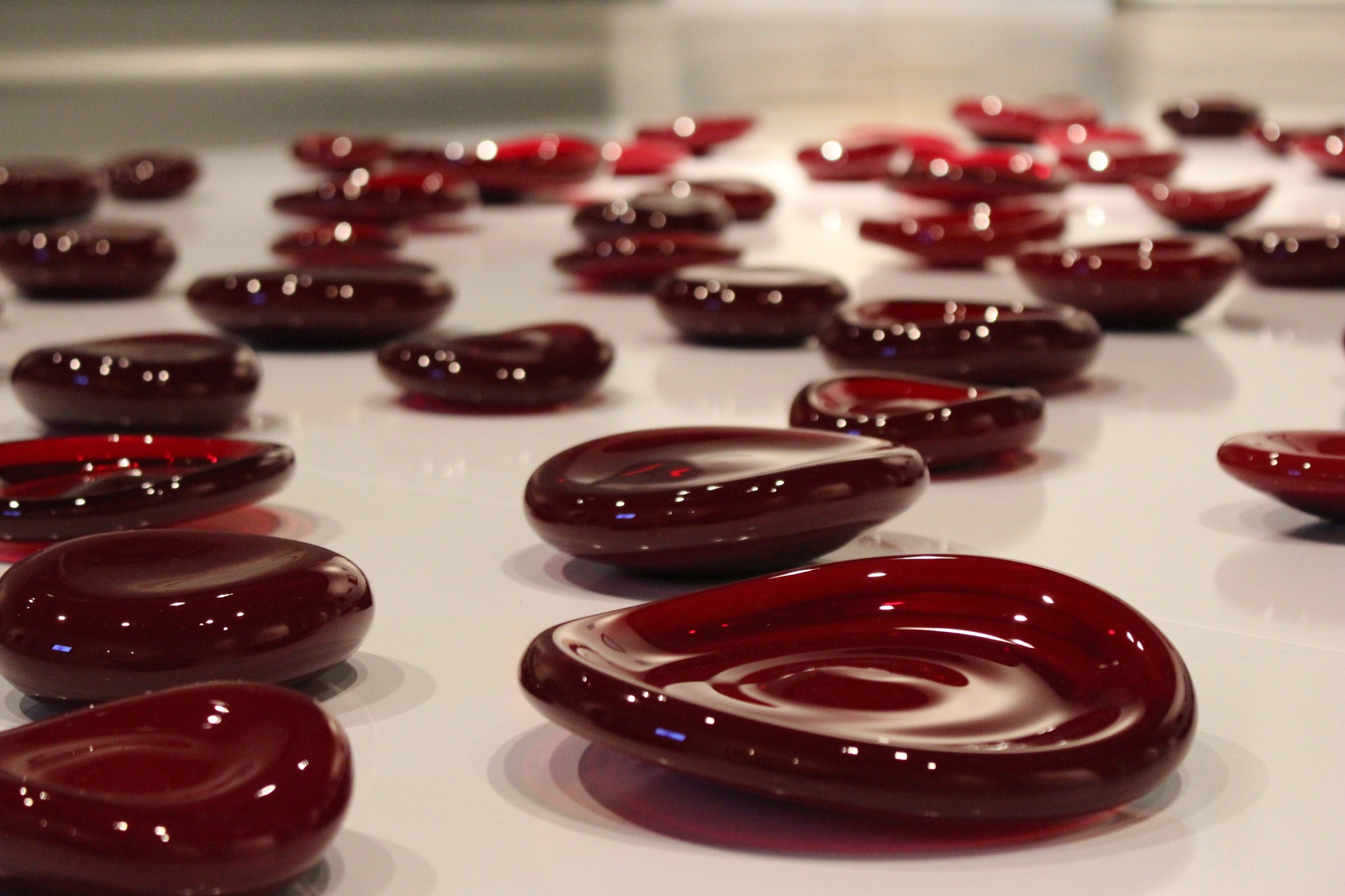The nationally renowned “Art AIDS America” exhibit opened at Kennesaw State University’s Zuckerman Museum Saturday, Feb. 20.
The exhibit is designed to showcase art made in response to the AIDS epidemic in the United States throughout history. The showcase has been celebrated across the country and has been critically acclaimed in publications like The Huffington Post while it was on its Los Angeles tour stop.
Museum director Justin Rabideau said that AIDS is a legacy and a reality.
The exhibit features a piece from KSU faculty member Robert Sherer, entitled “Sweet Williams,” which is drawn on paper in HIV Positive and HIV Negative blood.
Sherer spoke about his inspiration for the piece, set in Alabama during the AIDS epidemic.
“In the flower garden it hurt me to harvest the Sweet Williams because they reminded me of all of the lost Williams, Bills, Wills and Willys in my life,” Sherer said. “I was holding back the tears until Grandma yelled to me, ‘Now, Robert, cut down the most beautiful ones first.’ There is, of course, a direct relationship between attractiveness and HIV transmission. AIDS always ‘cuts down the most beautiful ones first.’”

Like AIDS itself, the exhibit has evolved over time. Organized by Tacoma Art Museum in partnership with The Bronx Museum, the exhibit has grown to include pieces from Atlanta’s High Museum as well as the Smithsonian. After the first premiere of the exhibit at the Tacoma Art Museum, there was an outcry by activists to include more African-American exhibits, as African-Americans with HIV make up a significant portion of the population.
In response to this socio-economic issue, the Zuckerman Museum hosted a roundtable discussion with the surrounding art community. Spelman College, Agnes Scott College and Georgia State University, as well as many others, included their input and contributions to the original exhibit. These are designated by plus signs around the description of the art piece, as well as stated near the entrance to the exhibit about these additions.

The exhibit features only one African-American woman exhibitionist, Kia Labeija, who was born HIV positive hereditarily through birth. She was vocal in the activism for a better African-American portrayal as well. The Zuckerman Museum recorded an hour and a half interview with Kia and an activist, Sur Rodney. There is an edited 30 minute version on display during the exhibit at the Zuckerman Museum with access to the full interview online.
“Art AIDS America” is a historical showcase that should be approached with reverence, and it is certainly not one to be missed. The exhibit will be open at the Zuckerman Museum from Feb. 20 to May 22, 2016.



